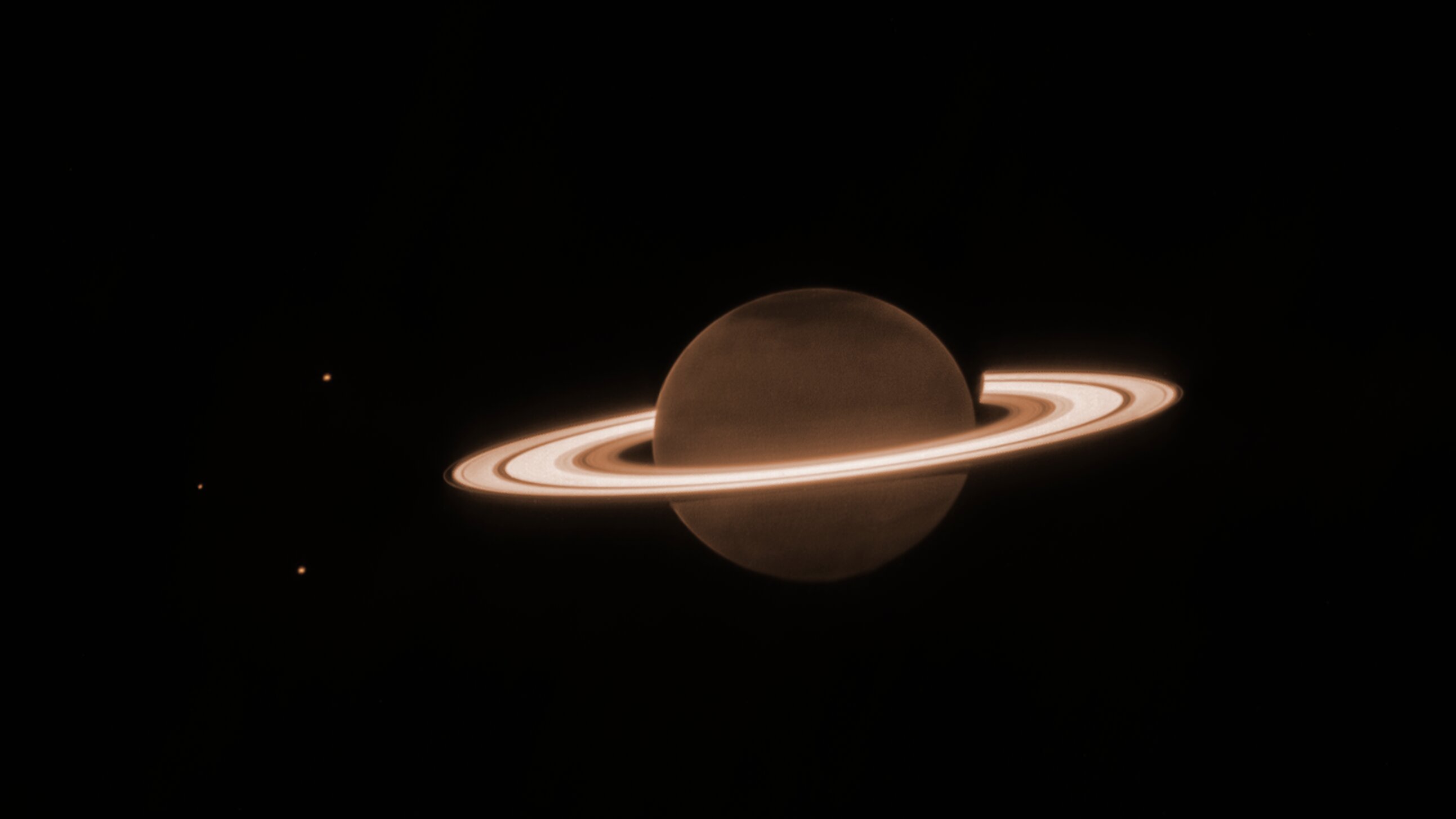Get ready to be amazed by the latest James Webb Space Telescope (JWST) image. Saturn’s iconic rings seem to glow eerily in this incredible infrared picture, which also unveils unexpected features in Saturn’s atmosphere.
This image serves as context for an observing program that will test the telescope’s capacity to detect faint moons around the planet and its bright rings. Any newly discovered moons could help scientists put together a more complete picture of the current system of Saturn, as well as its past.
Methane gas absorbs almost all the sunlight falling on the atmosphere at this picture’s specific infrared wavelength (3.23 microns). As a result, Saturn’s familiar striped patterns aren’t visible because the methane-rich upper atmosphere blocks our view of the primary clouds.
Instead, Saturn’s disk appears dark, and we see features associated with high-altitude stratospheric aerosols, including large, dark, and diffuse structures in Saturn’s northern hemisphere that don’t align with the planet’s lines of latitude. Interestingly, researchers previously spotted similar wave-like in early JWST NIRCam observations of Jupiter.
Unlike the atmosphere, Saturn’s rings lack methane, so at this infrared wavelength, they are no darker than usual and thus easily outshine the darkened planet. This new image of Saturn also reveals intricate details within the ring system, showcasing several of the planet’s moons like Dione, Enceladus, and Tethys.
2023-07-02 20:24:03
Link from phys.org
